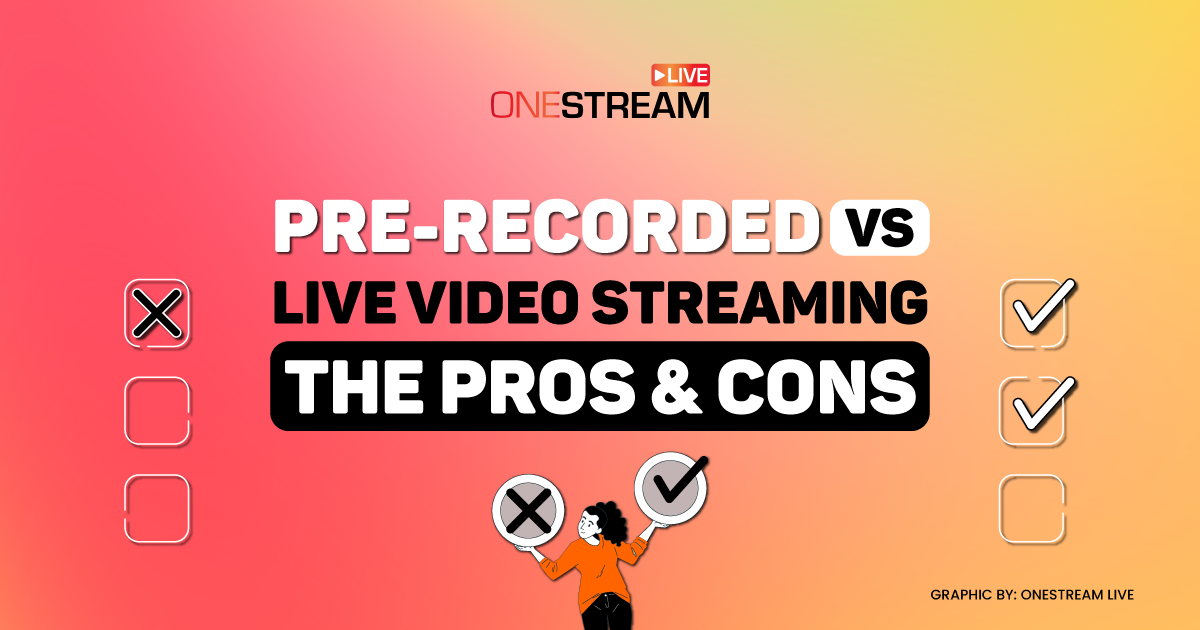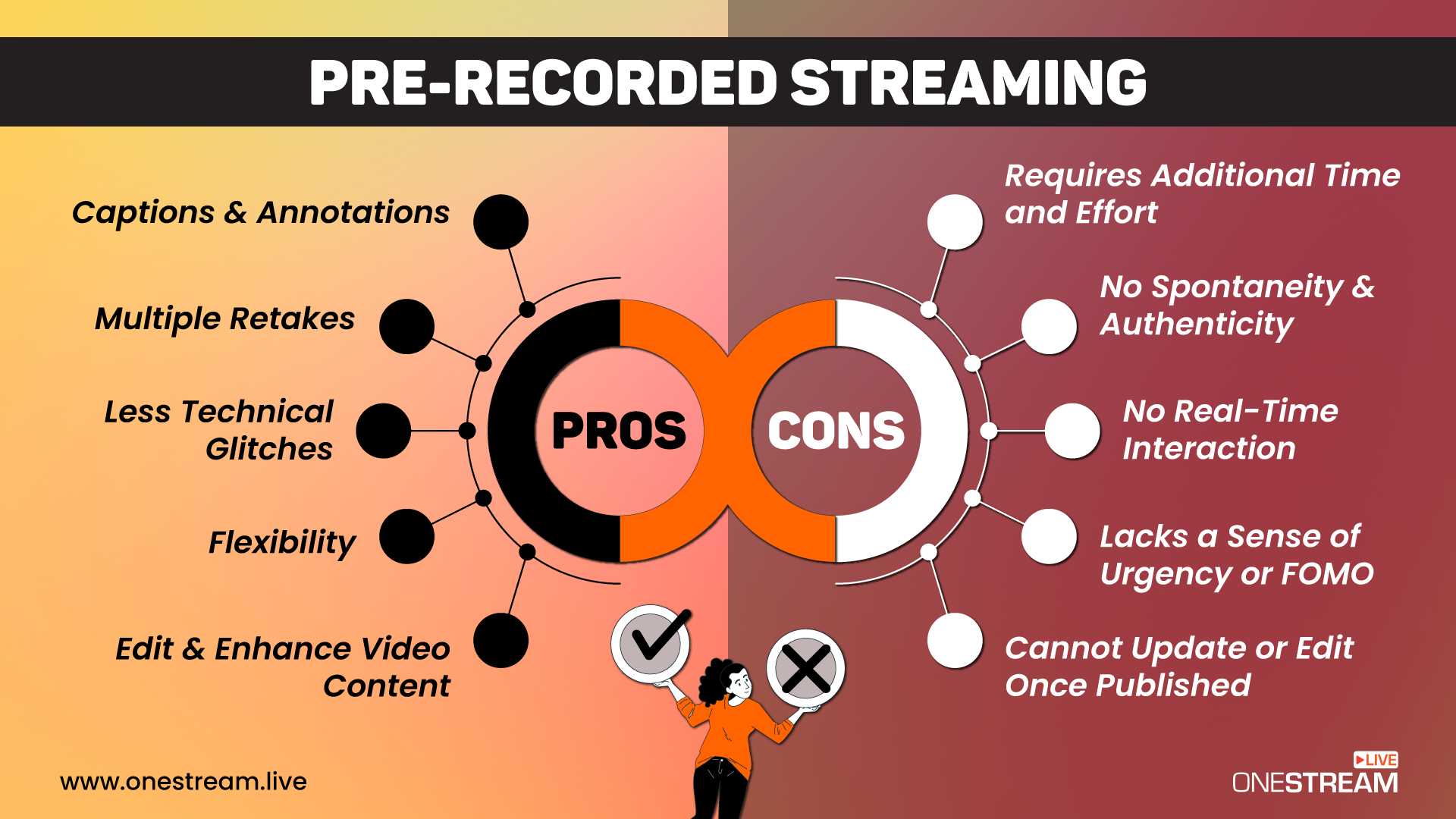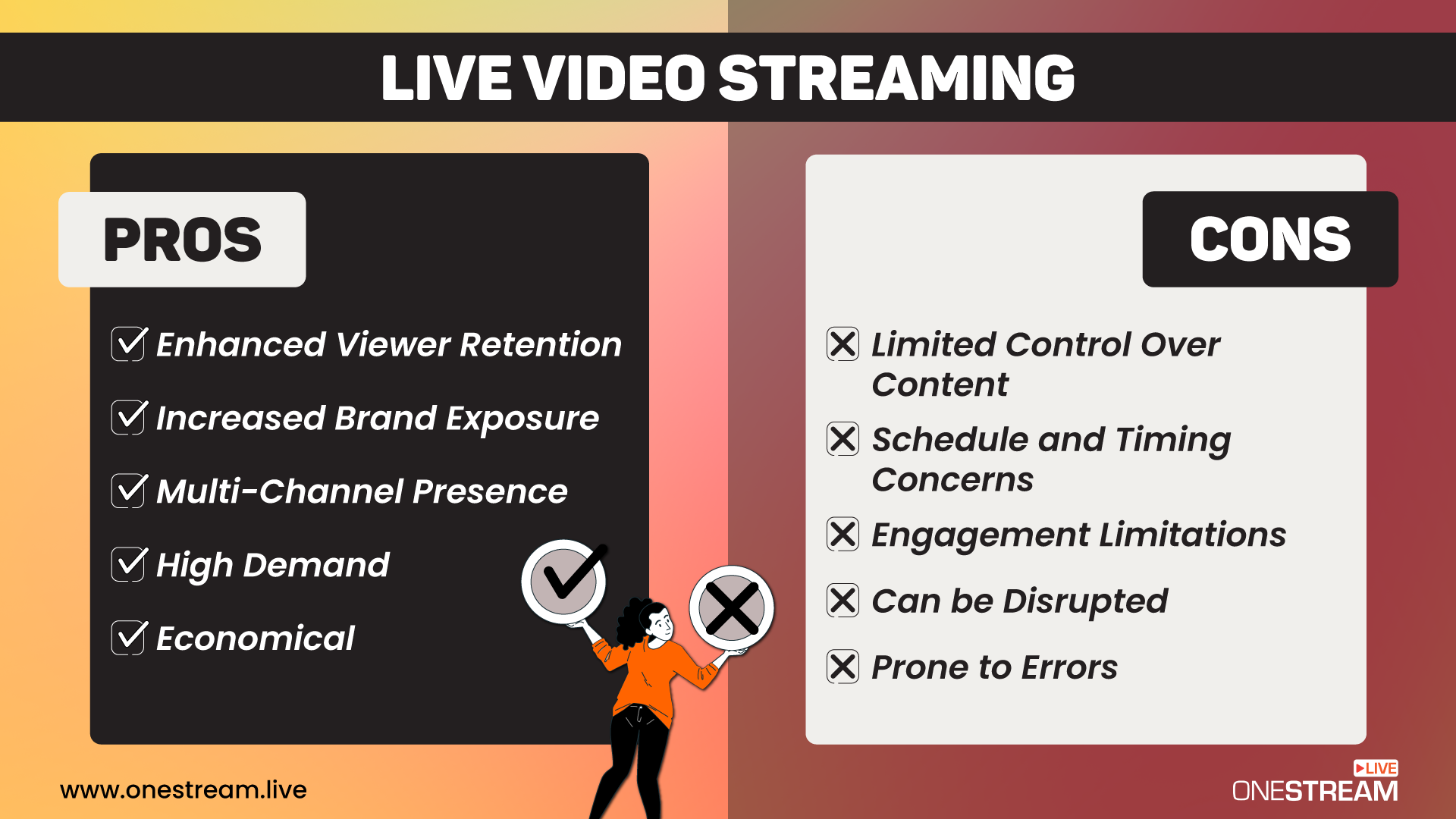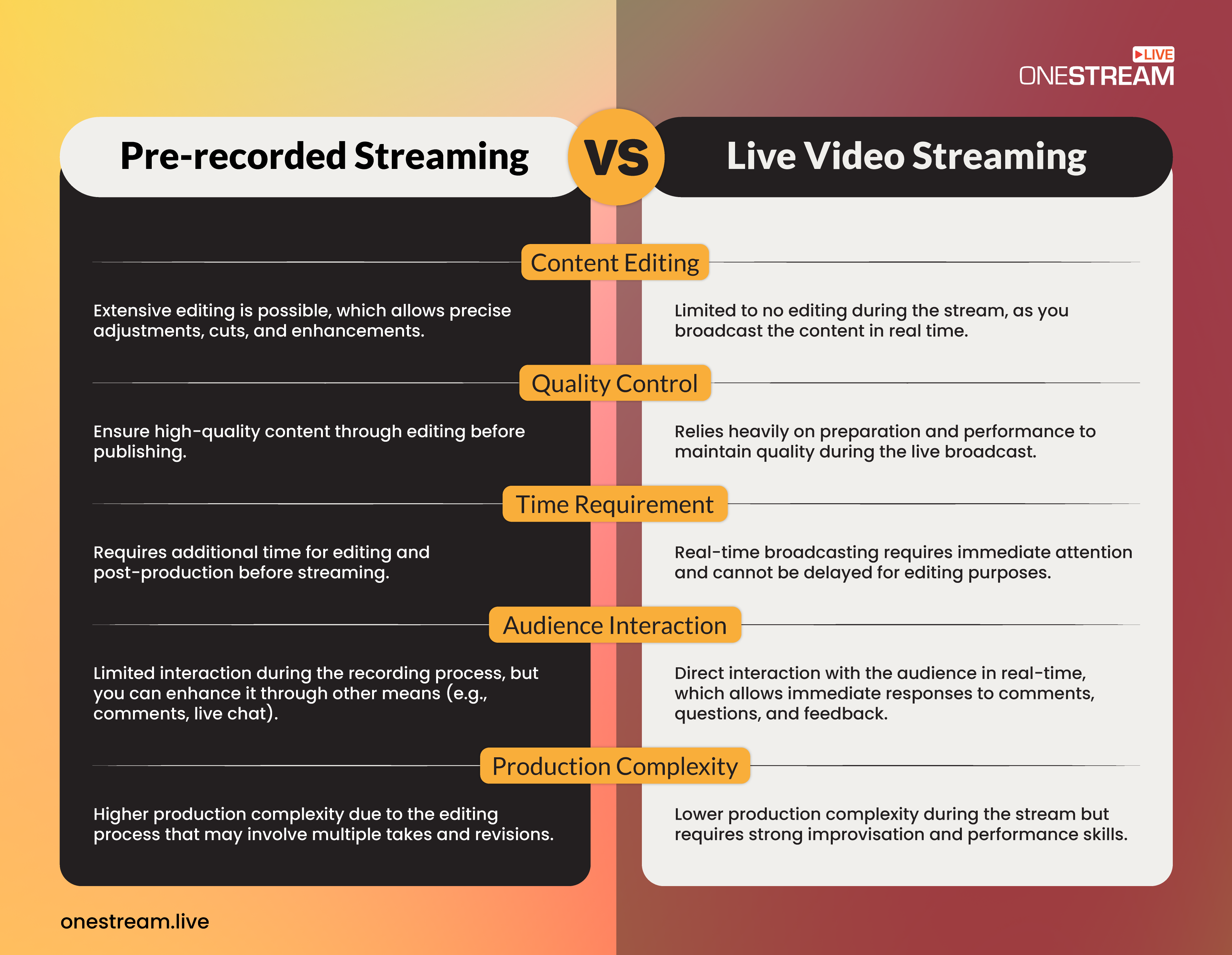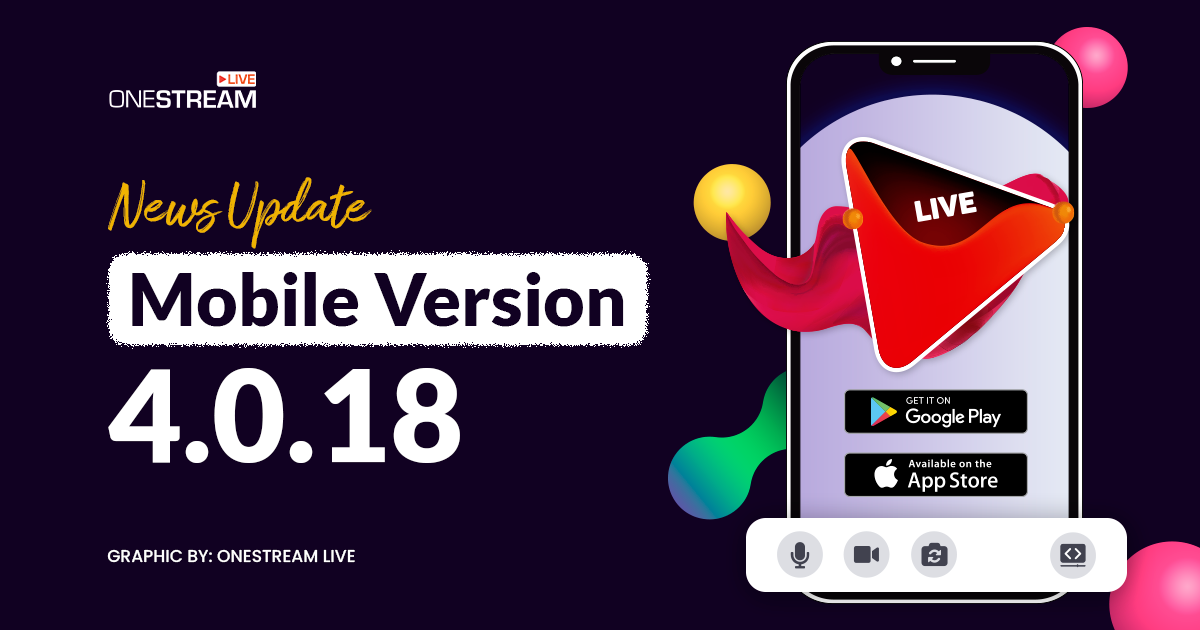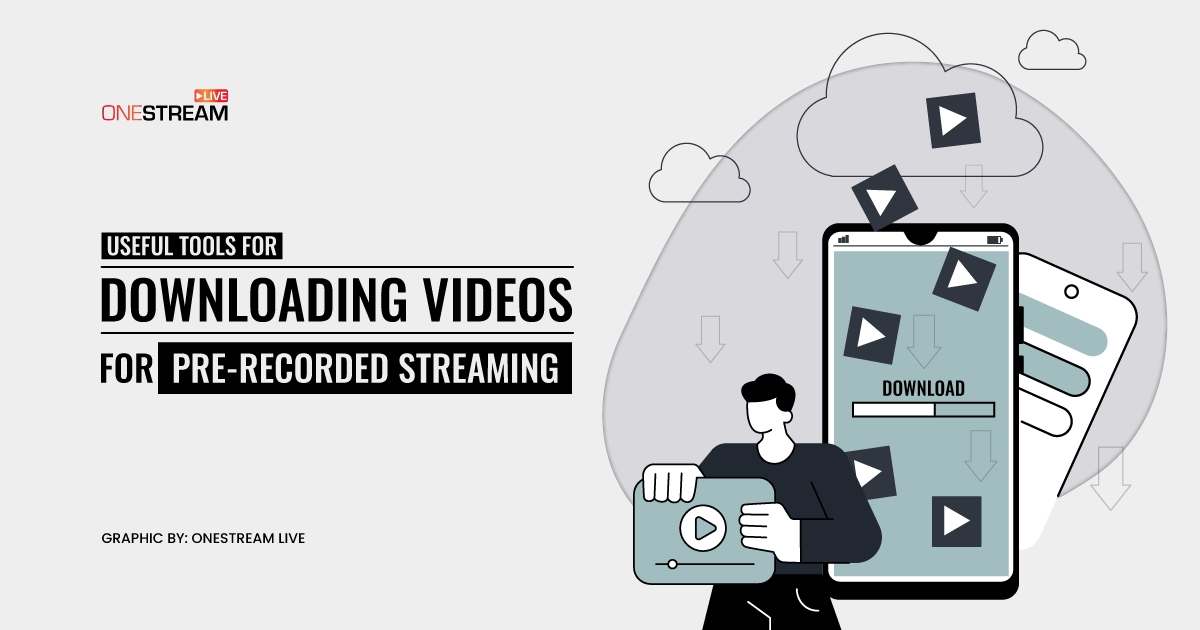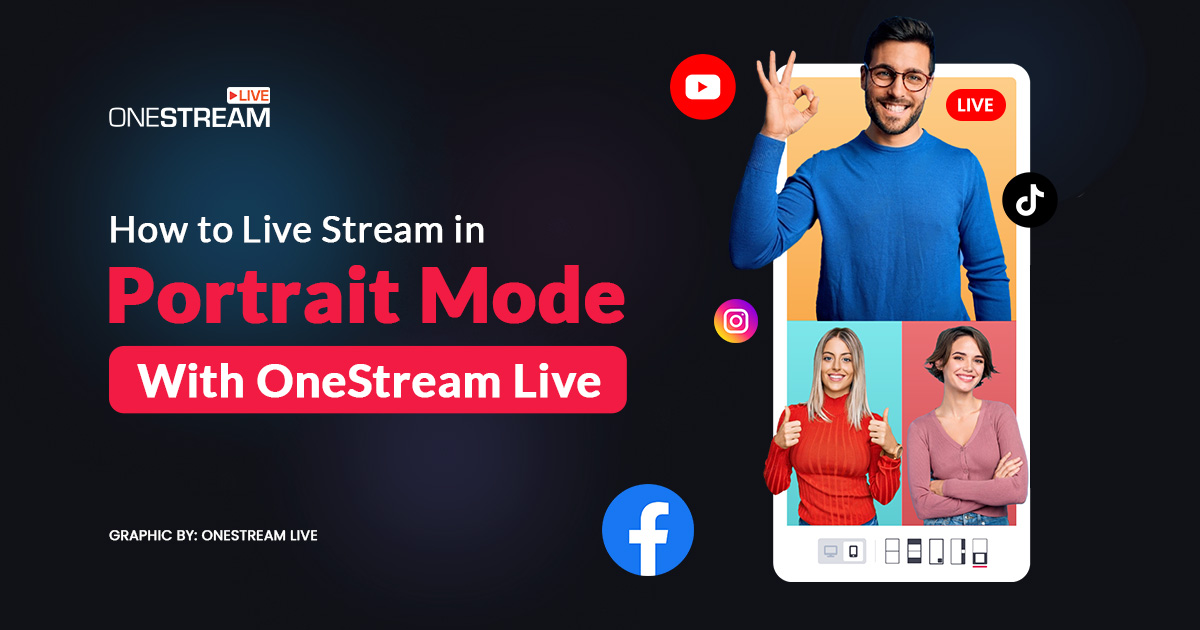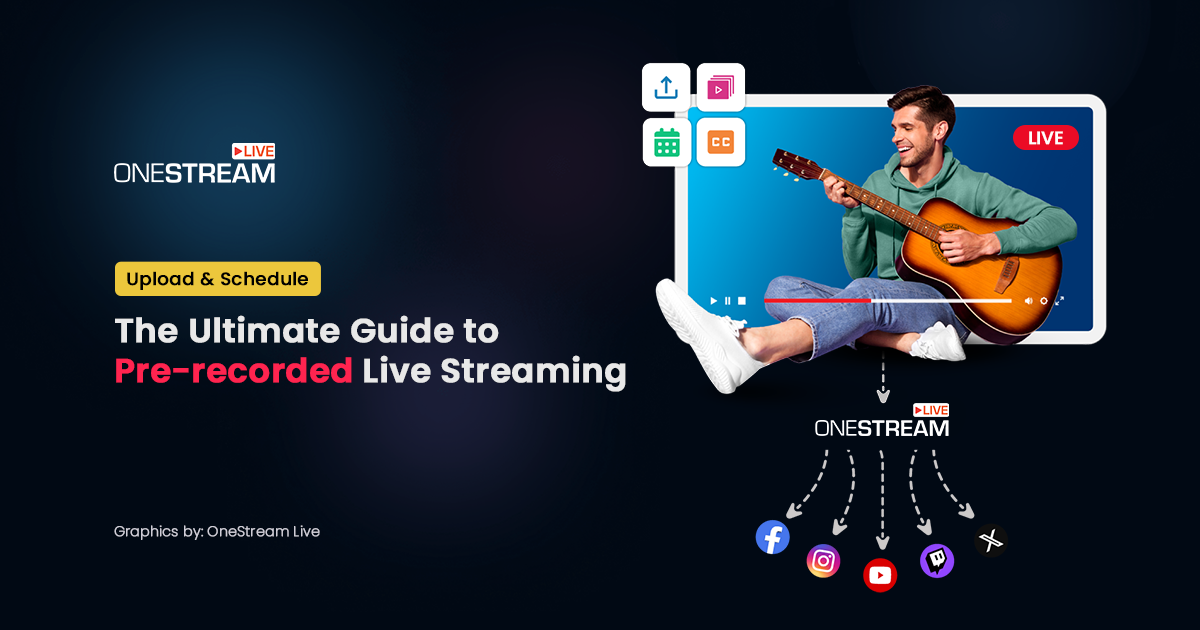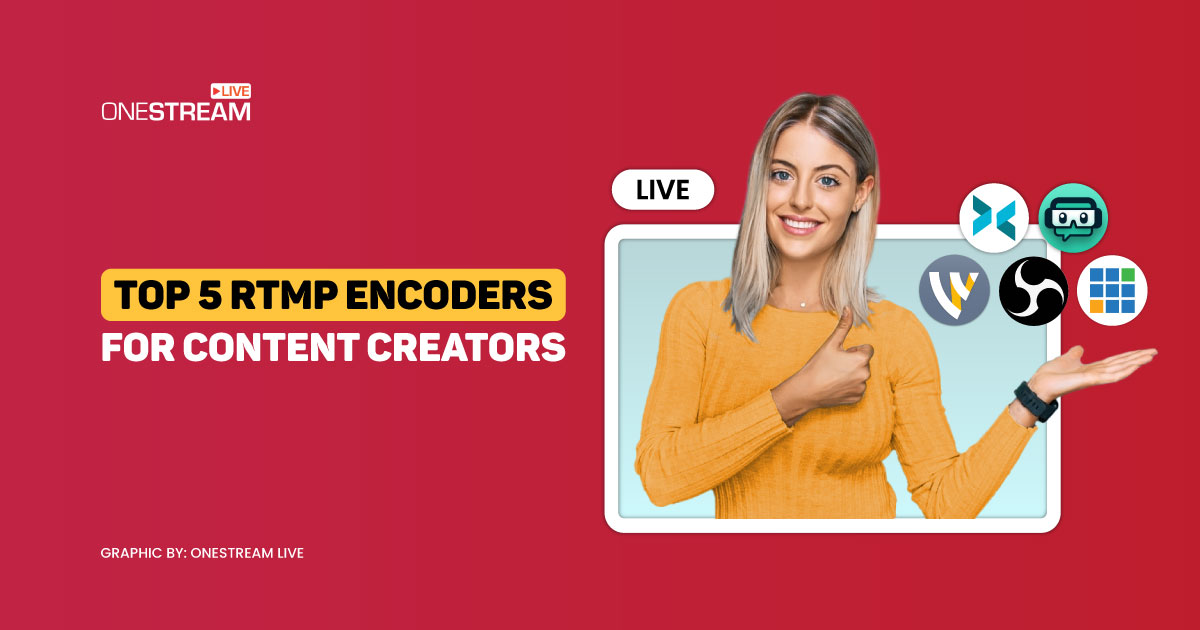Gone are the days when content creators, professionals or celebrities had to rely on written content for audience engagement. The 21st century is the era of engaging visually in the form of videos and live streams. It doesn’t come as a shock that the global live streaming industry hit the $1.49 billion-dollar figure in 2023 and the projected figure for 2024 is $1.84 billion.
Content creators, businesses, personal coaches, gamers, and many other types of content creators nowadays engage with their audience via video streaming. With OneStream Live, you can live stream both pre-recorded and real-time live videos to more than 45 social media platforms and the web simultaneously.
In this Article:
But the question remains; pre-recorded streaming vs live video streaming, which one to choose? In this blog, we discuss the pros and cons of both so you can decide which one suits your needs better.
What is Pre-Recorded Streaming?
Pre-recorded streaming is a type of video streaming in which you can upload & stream pre-recorded videos as live streams. This means you have the freedom to record your content first, edit and polish it for the best, and then stream it later. This greatly eliminates the pressure of going live in front of an audience and can be especially helpful if you feel anxious about live streaming or are camera-shy.
Moreover, it gives you more control and flexibility, while giving you the option to improve its overall quality.
Pros and Cons of Pre-Recorded Streaming
Benefits of Pre-recorded Streaming
Flexibility
As mentioned above, pre-recorded streaming allows you to live-stream pre-recorded videos. It means you can record and edit video content before broadcasting, which enables convenient scheduling and refinement to meet quality standards.
Multiple Retakes
Unlike live streaming, pre-recorded videos allow multiple retakes to ensure the desired quality. Editing further enhances content quality as you can choose and polish the most suitable shots.
Captions and Annotations
It also allows the addition of captions, graphics, and annotations. This way, you can enhance viewer understanding and enjoyment and convey your message in a better way.
Less Technical Glitches
Pre-recorded streaming eliminates the chances of technical problems during recording. It ultimately allows thorough checking before presentation to ensure a seamless viewing experience.
Edit and Enhance Video Content
Pre-recorded streaming facilitates editing and enhancement of video content with music, images, and text. These features allow you to create engaging and informative high-quality videos.
Read More: How to Live Stream Pre-Recorded videos on Social Media
Disadvantages of Pre-recorded Streaming
No Real-time Interaction
Pre-recorded streaming lacks real-time interaction with the audience. It can lead to a sense of separation and missed engagement opportunities. Although moderators can address questions beforehand, the absence of live interaction can reduce the excitement of engagement.
No Spontaneity and Authenticity
Pre-recorded content lacks the spontaneity and authenticity of live streams, that can reduce viewer engagement. Extensive editing can refine content but may remove the rawness of spontaneous recordings.
Cannot Update or Edit Once Published
Once you publish pre-recorded videos, you cannot edit or update them. Now, this might leave mistakes unresolved and limit responsiveness to current events or trends and search engine performance.
Lacks a Sense of Urgency or FOMO
Pre-recorded streaming lacks the urgency and FOMO associated with live events. Again, it can potentially reduce viewer engagement—there is no exclusive experience tied to watching at a specific time.
Requires Additional Time and Effort
Creating pre-recorded content demands more planning and rehearsal than live streaming. Therefore, it lacks room for improvisation. Careful execution of all elements such as script, lighting, and camera angles, is necessary.
What is Live Video Streaming?
Live video streaming is a way of sharing real-time video content over the internet. For example, imagine you are attending a music festival, but your friend can’t make it.
You can live-stream the concert using your phone and share it with your friend. As you record the concert, your friend can watch it live on their own device from anywhere in the world. This is possible because the video is being streamed over the internet in real-time.
The same concept applies to live-streaming events, webinars, sports matches, and even personal vlogs. Live video streaming technology allows people to connect with others and share experiences as they happen.
Pros & Cons of Live Video Streaming
Benefits of Live Video Streaming
High Demand
According to the users, live video streaming is the third most engaging content format and 78% Facebook users watch live streams. Live videos build a real-time connection between content creators and viewers to facilitate instant interaction and feedback. This immediate engagement makes live video content highly sought after as it provides a more immersive experience to viewers.
Enhanced Viewer Retention
Live videos increase watch time as viewers cannot pause or resume them. Even after the live stream ends, you can repurpose saved videos to maintain audience engagement, which further enhances viewer retention over time.
Multi-Channel Presence
Live streaming enables content creators to reach their audience across multiple social media platforms simultaneously. By analyzing performance metrics on different platforms, creators can customize their streaming strategy to engage with their audience effectively, which maximizes outreach and engagement.
Increased Brand Exposure
Going live on platforms enhances brand visibility and awareness by generating higher engagement levels through likes, comments, and shares.
Longer live streams increase the chances of
- Brand discovery,
- Expanding reach, and
- Visibility within the audience
Economical
Live video streaming is cost-effective compared to pre-recorded streaming. It requires fewer resources and less post-production work. Real-time interaction eliminates the need for extensive editing, which allows creators to repurpose content efficiently.
Disadvantages of Live Video Streaming
Prone to Errors
Live video broadcasts in real time, which leaves room for technical issues like slow internet or equipment malfunctions. As live streams lack the editing process, any mistakes from hosts or participants are immediately visible.
Can be Disrupted
While live videos offer immediate connection, they are prone to interruptions. Streaming outside a controlled environment may lead to unexpected interruptions from children, pets, or strangers. It may adversely affect viewers and cause a loss in audience engagement if not properly managed.
Limited Control Over Content
Real-time broadcasting limits content control, as you cannot edit any shortcomings. Graphics, music, or other enhancements commonly found in pre-recorded videos are not feasible during live streams, leaving little room for adjustments or alterations.
Engagement Limitations
Interactivity during live streams is limited to the duration of the broadcast. Unlike posts or pre-recorded videos, viewers cannot leave comments or ask questions post-stream. Factors like time zone differences or technical issues may also negatively affect real-time engagement.
Schedule and Timing Concerns
The success of live videos is dependent on precise scheduling and timing. Promotion in advance is essential to ensure audiences are aware of the broadcast time. Careful planning and scheduling are necessary to maximize the effectiveness of live video content.
Pre-recorded Streaming vs Live Video Streaming Comparison
Pre-recorded Streaming vs Live Video Streaming: Which One to Use and When?
Now that we know the pros and cons of pre-recorded and live video streaming, here is how you can use both options effectively depending on the nature of the event.
When to Use Pre-Recorded Streaming?
Guides and How-To Videos: Recorded videos work well for teaching and tutorials. For example, How-To videos are great for pre-recorded streaming because they explain steps individually. Users can even download and save them if the platform allows it.
Storytelling and Brand Content: Brands can use recorded content to create interesting stories, ads, and videos to promote themselves. This helps them send the message they want in the desired manner.
Educational Workshops and Webinars: To make sure workshops and webinars are of good quality, you can record them, edit them, and then show them to viewers at the scheduled time.
Product Demonstrations: Businesses can benefit greatly from pre-recorded videos as they help brands present their products’ features, benefits, and how to use them.
When to Use Live Video Streaming?
Live Events: Live video streaming is better for conferences, event coverage, sports, and concerts with large audiences.
Interviews and Panels: Real-time audience questions and interactions enhance live interviews, discussions, and panel sessions.
Engage Audience: Live streaming allows for Q&A sessions, polls, and audience participation. It builds a strong community and boosts engagement.
Product Releases: Live streaming is a highly suitable option for press releases.
News Coverage: Current news and media rely on live streaming for timely updates and delivery.
Gaming: Live streaming is popular in gaming as it allows gamers to interact in real-time with their audience while playing and commenting.
FAQs
Is live streaming better than recording?
It is hard to answer in a single word, but in live streaming, people are expected to stick around longer. That’s because they cannot pause or resume videos, which creates a sense of urgency. Thus, live streaming is a better audience-engaging tool.
What is the difference between streaming and live streaming?
Livestreaming refers to broadcasting video or audio in real time or almost real time. It is different from other forms of streamed media like vlogs, video-on-demand, and YouTube videos, which are simply called streaming.
What is the best quality for streaming?
A higher video bitrate improves image quality and reduces pixelation during fast scenes. Aim for 2000-3000 kbps for 720p streaming and keep the bitrate under 4000 kbps for 1080p.
Conclusion
In summary, both live video streaming and pre-recorded streaming have pros and cons. Live streaming is great for engaging with an audience in real time and creating a sense of excitement, while pre-recorded videos offer more control over the content and can be edited before publishing.
Ultimately, the choice between live video streaming and pre-recorded streaming depends on your goals, preferences, and resources. OneStream Live provides a user-friendly platform that allows you to stream live and pre-recorded videos across multiple platforms simultaneously.
No matter which streaming method you prefer, OneStream Live offers a solution for your needs. With OneStream Live, you can stream pre-recorded videos and go live in real-time using our OneStream Studio or external RTMP source through popular third-party apps such as OBS, Zoom, Wirecast, Ecamm, XSplit, Restream, and more. You can broadcast to over 45 social platforms and websites, including Facebook, YouTube, Instagram, Amazon Live, TikTok, Twitter, and many more. With OneStream Live, you can easily and conveniently reach your audience across multiple platforms, regardless of your streaming preference.
Pro-tip: Unlock the full potential of OneStream Live by enrolling in our detailed Udemy course, designed to take your live streaming to the next level.
OneStream Live is a cloud-based live streaming solution to create, schedule, and multistream professional-looking live streams across 45+ social media platforms and the web simultaneously. For content-related queries and feedback, write to us at [email protected]. You’re also welcome to Write for Us!

